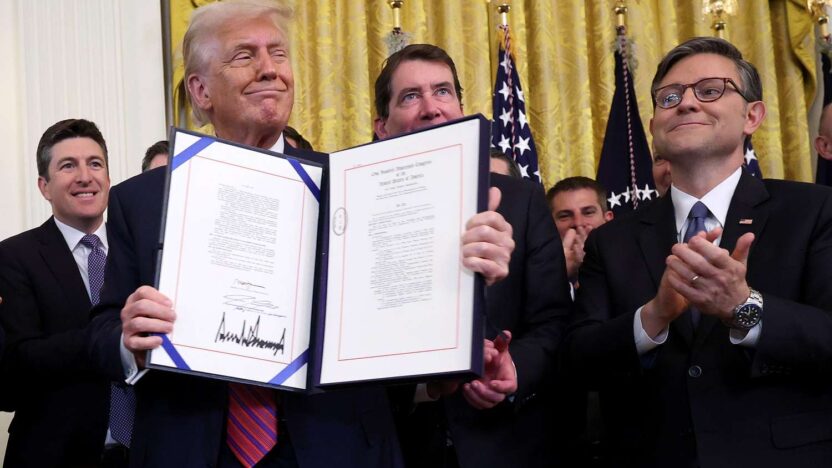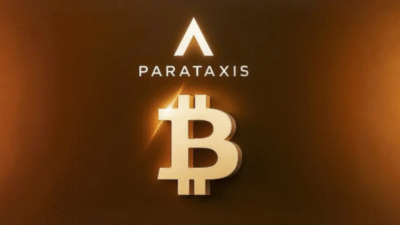Stablecoins just gained their first U.S. federal rulebook, and the timing could not be better. The newly-signed GENIUS Act creates a bank-grade licensing regime for payment-stablecoin issuers, mandates 1-for-1 cash-or-Treasury backing, and hands joint oversight to the Fed, OCC and a new Stablecoin Commission. With clear rails in the world’s largest capital market—and vocal support from the White House, Treasury and Congress—analysts now project the global stablecoin float to balloon from roughly $255 billion today to well over $3 trillion by 2030. For senior fintech leaders, that growth path points to explosive demand for liquidity, compliance infrastructure and bank–fintech partnerships over the next decade.
The U.S. gets “an internet-native dollar”
The GENIUS Act, enacted on 18 July 2025, closes the regulatory vacuum that had kept many banks on the sidelines. It requires monthly reserve attestations, prohibits algorithmic pegs, and obliges issuers to hold at least 80 % of backing assets in short-term U.S. Treasuries—aligning stablecoins with money-fund-style safeguards. WilmerHale calls it “the first comprehensive federal charter for tokenised cash,” while Gibson Dunn notes that it hard-codes consumer redemptions at par value within five business days. By specifying supervisory lanes for banks, credit unions and non-banks, the Act also fixes the dual-state/federal patchwork that previously hampered national-scale issuance.
Tailwinds from Pennsylvania Avenue
At the signing ceremony President Trump heralded the law as making America “the undisputed leader in digital assets.” Treasury Secretary Scott Bessent echoed that the dollar now has “an internet-native payment rail that is fast, frictionless and free of middlemen,” predicting a surge in demand for Treasuries that back the coins. White-House crypto czar David Sacks said passage could “unlock trillions of incremental Treasury demand” and cement dollar hegemony on-chain. Presidential adviser Bo Hines put a headline figure on the upside, forecasting a total U.S. crypto market cap of $15-20 trillion within five years once stablecoins achieve mainstream compliance.
A market poised to 10×
The global float of fiat-backed stablecoins sits near $254-265 billion, up roughly 30 % year-on-year. Bloomberg research now projects a base-case of $3.7 trillion by 2030 as banks, payment networks and corporates tokenise cash balances for 24/7 settlement. Because reserves skew heavily toward short-term bills, a $3 trillion market would warehouse $2-2.5 trillion in Treasuries—equivalent to 10 % of outstanding marketable debt. That structural bid is already visible: Circle, Paxos and Tether collectively hold more than $200 billion in government securities today.
Banks and markets rush to integrate
Federal clarity has emboldened incumbents. The OCC’s May interpretive release confirmed that nationally chartered banks may custody, mint and settle stablecoins if they meet GENIUS-level controls. Within weeks, Bank of America, Citi and JPMorgan each disclosed pilot programmes for proprietary coins aimed at wholesale payments and repo markets. Europe’s MiCA regime, Hong Kong’s Stablecoin Ordinance and Singapore’s single-currency framework add parallel clarity abroad, setting the stage for interoperable, multi-jurisdiction issuance. The U.K. is scrambling to follow suit with draft rules under FSMA 2025.
24/7 rails already moving hundreds of billions
Even before GENIUS, stablecoins powered over $600 billion in monthly transfers on the TRON network alone, underpinning $2 million-plus in daily fee revenue. Visa’s On-Chain Analytics dashboard shows weekend volumes now rival weekdays, underscoring demand for round-the-clock settlement. Chainalysis estimates that stablecoins represent two-thirds of all crypto transaction value, making them the asset class’s “killer app.” McKinsey expects tokenised cash to redraw the $2 trillion global payments fee pool as merchants embrace instant, low-cost settlement rails.
Five- to ten-year outlook
- Treasury-driven growth: If forecasts hold, stablecoins could finance one-eighth of all U.S. bill issuance by 2030, lowering public borrowing costs but intensifying monetary-policy linkages.
- Tokenised securities clearing: Euro-dollar repo, money-market funds and even equities are likely to adopt on-chain cash legs, compressing settlement from T+2 to T+0.
- Retail wallets & payroll: With Apple-Pay-style UX and gas-sponsored accounts, dollar stablecoins may reach hundreds of millions of users in inflation-prone economies.
- Regulatory export: GENIUS’s disclosure template is expected to become the de-facto global standard, much as Sarbanes-Oxley influenced audit rules worldwide.
- New BD battlefield: As compliance barriers fall, differentiation shifts to bank partnerships, merchant integrations and cross-border corridors—favouring executives who blend policy fluency with revenue-driven deal-making.
Bottom line: The GENIUS Act turns the U.S. dollar into programmable cash with a legal seal of approval. For fintech strategists, the next decade will hinge on connecting that on-chain liquidity to real-world finance—creating a multi-trillion-dollar canvas for payment innovation, capital-markets efficiency and global dollar adoption.





